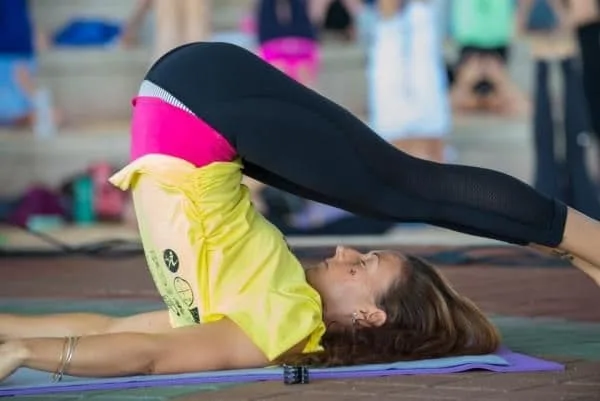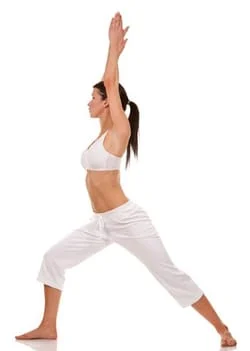
Our team has embraced not only the growing popularity of Yoga but also the wisdom that exists within the structure of the practice as it relates to overall wellness and physical health – after all, yoga postures have become common place in physical therapy prescriptions as well as gym routines. In our office we incorporate the true nature of yoga as we look at customizing the postures so that they meet an individual exactly where they presently are: physically, mentally, and emotionally.
You will meet one-on-one with our therapist/instructor to design a practice that works towards restoring structural balance in areas of strength and flexibility as well as mind/body balance. We recommend meeting for several sessions so that we can fine-tune and add to your routine – ultimately, empowering you with all the necessary tools to perform yoga at home safely and confidently.
Our instructors integrate a variety of yoga styles in order to best accommodate individual needs and goals. Hatha and Iyengar are the primary styles that emphasize correct anatomical alignment while allowing postures to be held long enough to affect the muscle fibers for length and strength. We see benefits of this style including elimination of aches and pains, improved posture, and increased flexibility and muscle tone. In addition to instruction on the practice of Asana (postures) we integrate aspects of pranayama (breath control) in efforts to maximize the release of resistance and tension held within the physical body, mental body and energy body. Through breath awareness we see individuals better able to engage in the posture while creating alignment in both the inner and outer aspects of self, resulting in calmness of body and mind.
If an individual is identified as being more parasympathetic dominant then a more active style of yogalike Vinyasa Flow or Bhakti may be needed to create balance – these styles require a greater cardiovascular effort on the body and induce a healthy state of stress. On the flipside, if an individual is identified as more sympathetic dominant (high stress, reactive) then techniques like Yoga Nidra or Pranayama (breath awareness) would be incorporated as their primary practice. Because we pair these techniques to meet an individual’s physiological, psychological, and mental needs we see reduction of symptoms such as: insomnia, fatigue, pain, anxiety, cognitive decline or hyperactivity, and emotional imbalances, just to name a few. In addition to symptom relief we also see and hear about the additional benefits like: sense of peace, increased sense of self-efficacy, improved body image and appreciation, enjoyment of physical activity, deeper feeling of connectedness, and increased vitality, among many more.
A DEEPER UNDERSTANDING AND EXPLORATION INTO THE PRACTICE OF YOGA:

In the United States most of us associate yoga with the practice of physical postures and have viewed it as a means to obtaining a long, lean, and flexible body. This is just one small component of the traditional practice of yoga and quite honestly postures, also known as asanas, offer the most limited benefits when compared to the other aspects of the yoga practice. Traditionally, yoga is broken into Eight Limbs which represent the 8 paths that are involved in living a meaningful and purposeful life and should be used as a guide for moral and ethical conduct as well as self-discipline; they allow for optimal focus on one’s health and wellness; and embrace the spiritual connectedness of human-BEINGNESS.
1. Yama - The first limb deals with one’s ethical standards and sense of integrity, focusing on our behavior and how we conduct ourselves in life. These are universal rules and are shared across cultures and religions; the golden rule “do unto others as you would have done unto you” is a famous example of these principles. You can think of the yamas as governing over how we, as individuals, relate to others. The yamas are divided into 5 subcategories:
- Ahimsa – nonviolence to all living beings (others and self)
- Satya – truthfulness – thoughts, communication and actions
- Asteya- non-stealing; ability to live honestly
- Brahmacharya – continence; using one’s life energy wisely
- Aparigraha – non-covetousness; abundance with generosity
2. Niyama - The second limb has to do with self-discipline and spiritual observances. Examples may include: attending church services, prayer, personal practice of asana and meditation, hygiene, contemplative or self-reflective time.You can think of the Niyamas as governing over how we, as individuals, relate to our divine self. The niyamas are divided into five subcategories:
- Saucha – cleanliness, purity, and nourishing one’s mind, body, and spirit
- Samtosa – contentment within the present moment, independent of external environment
- Tapas – devotion to the attainment of enlightenment
- Svadhyaya – sense of internal self – self awareness and value
- IsvaraPanidhana – surrendering to the enlightenment of faith/divinity. Freedom from the physical restraints of being human.
3. Asana – The third limb refers to the physical practice of yoga – the postures. In the yogic view, the body is a templeof spirit;attendance to this container is an important part of our spiritual growth. Through the practice of asanas, we not only develop the habit of discipline and the ability to concentrate through physical and external distractions we also allow the release of physical, energetic, mental, and emotional restrictions. Finding stillness through the practice of movement prepares one for meditation.
4. Pranayama – The fourth limb is generally translated as “breath control” and utilizes techniques designed to gain mastery over the respiratory process while recognizing the connection between the breath, the mind, the body, and the emotions. As implied by the literal translation of pranayama, “life force extension,” yogis believe that it not only rejuvenates the body but actually extends life itself. This limb is a bridge not only between mind and body but also a bridge into the present moment.
NOTE:These first four limbs of yoga concentrate on refining our personalities, gaining mastery over the body, and developing an energetic awareness of ourselves. This is foundational for movement through the last four limbs which focus more on the infinite and deal with the senses, the mind, and attaining a higher state of consciousness.
5. Pratyahara – The fifth limb focuses onsensory withdrawal and transcendence. It is during this stage that we make the conscious effort to draw our awareness away from the external world and outside stimuli. Acutely aware of – yet fostering a detachment from our senses, we direct our attention internally – essentially we become a Witness to ourselves thus allowing us to objectively observe our cravings: habits that are perhaps detrimental to our health and which likely interfere with our inner growth.

7. Dhyana – The seventh limbbrings us into a state of meditation or contemplation – an uninterrupted flow of concentration. Although concentration (dharana) and meditation (dhyana) may appear to be one and the same, a fine line of distinction exists between these two stages. Where dharana practices one-pointed attention, dhyana is ultimately a state of being keenly aware without focus. At this stage, the mind has been quieted, and in the stillness it produces few or no thoughts at all. This is essentially the stage where we move from “doing” to simply “being”.
8. Samadhi – The final limb is described as a state of ecstasy or bliss. At this stage, transcending beyond one’s self is experienced allowing for the union or connection with the divine source of all living beings. This journey back to the source, awareness of being one with the Universe allows for a true sense of peace.
